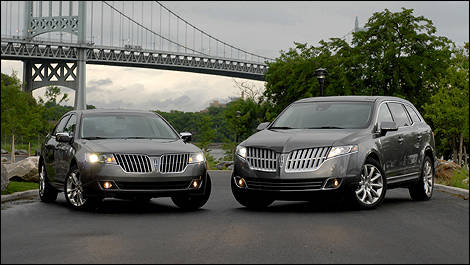Dearborn, Michigan -- Only in today's shaky and high-stakes global auto industry, would burning through US$1 billion in cash be considered a "great" quarterly result.
It's considered great because the loss was less than expected, quite a bit better than Ford's first quarter of 2009 -- when it burned through US$3.7 billion -- and is further proof that Ford is on a trajectory to profitability.
Ford hatched a turn-around plan three years ago. It seems to be working.
"We are following our plan exactly," said Alan Mulally, the man who orchestrated the plan, when he parachuted from Boeing to become Ford president and CEO in 2006.
Speaking to a scum of reporters on hand in Dearborn for a preview, on July 21, of the automaker's 2010 models, Mulally went on to say that Ford is starting to pay back the debt that was undertaken to finance the transformation ... "Which is great. It's the American way, pay back your loan, honour all the commitments of the people who are supporting you."
Ford has the cash to do that, because it was recently able to raise billions of dollars in the equity markets.
If all goes according to "plan," Ford will stop burning cash in its North American auto operations sometime around 2011.
Targeting Freshness
Earlier in the day, Derrick Kuzak, Ford's top product development manager, noted that Ford's turnaround plan targeted "product freshness" as an essential element for market success.
"We measure that ("freshness") by average age in the showroom and refreshening cadence," said Kuzak.
He cited Merrill Lynch's closely watched "Cars Wars" study, which concluded that Ford is expected to have the highest vehicle replacement rate among full-line automakers between the 2010 and 2013 model years.
According to Kuzak, Ford is better able to churn out new products and technologies because it re-organized product development into a more global, and more simplified process.
To further this initiative, Ford also drastically cut the number of vehicle architectures and powertrain families. By 2012 almost 80 percent of the volume globally will come from eight core platforms.
"We were clearly too complex," said Kuzak. "You drain precious capital -- both human and financial. With Alan's help we substantially reduced brands and nameplates, which allows us to achieve leadership on the remaining nameplates."
 |
| 2010 Ford Shelby GT500 |
It's considered great because the loss was less than expected, quite a bit better than Ford's first quarter of 2009 -- when it burned through US$3.7 billion -- and is further proof that Ford is on a trajectory to profitability.
Ford hatched a turn-around plan three years ago. It seems to be working.
"We are following our plan exactly," said Alan Mulally, the man who orchestrated the plan, when he parachuted from Boeing to become Ford president and CEO in 2006.
Speaking to a scum of reporters on hand in Dearborn for a preview, on July 21, of the automaker's 2010 models, Mulally went on to say that Ford is starting to pay back the debt that was undertaken to finance the transformation ... "Which is great. It's the American way, pay back your loan, honour all the commitments of the people who are supporting you."
Ford has the cash to do that, because it was recently able to raise billions of dollars in the equity markets.
If all goes according to "plan," Ford will stop burning cash in its North American auto operations sometime around 2011.
Targeting Freshness
Earlier in the day, Derrick Kuzak, Ford's top product development manager, noted that Ford's turnaround plan targeted "product freshness" as an essential element for market success.
"We measure that ("freshness") by average age in the showroom and refreshening cadence," said Kuzak.
He cited Merrill Lynch's closely watched "Cars Wars" study, which concluded that Ford is expected to have the highest vehicle replacement rate among full-line automakers between the 2010 and 2013 model years.
According to Kuzak, Ford is better able to churn out new products and technologies because it re-organized product development into a more global, and more simplified process.
To further this initiative, Ford also drastically cut the number of vehicle architectures and powertrain families. By 2012 almost 80 percent of the volume globally will come from eight core platforms.
"We were clearly too complex," said Kuzak. "You drain precious capital -- both human and financial. With Alan's help we substantially reduced brands and nameplates, which allows us to achieve leadership on the remaining nameplates."
 |
| 2010 Lincoln MKZ et MKT |

